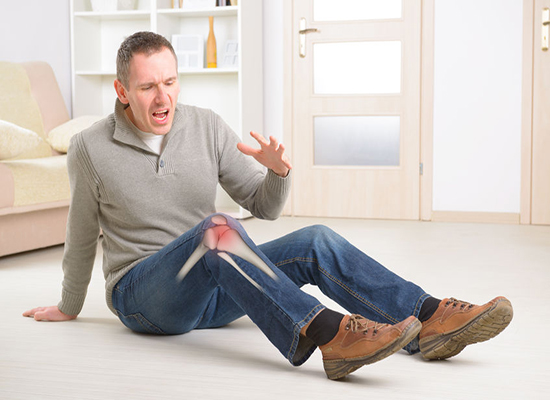Male Supplements
Get Cutting Edge Herbal Supplements for Men
No Subscriptions - No Monthly Billing - Buy What You Need When You Need It!
Activate 15% Discount
Tackle Degenerative Joint Issues
The pain of degenerative joint problems can usually be managed with treatment, but sometimes, for any number of reasons, the pain in an affected joint becomes much worse. The R.I.C.E. treatment was developed for immediate care of acute soft tissue injuries. It can ease the discomfort and speed the return to the joint's normal function.
It's important to start treatment as soon as a flareup occurs to prevent the situation from becoming worse. If you suspect there may be more going on than a flareup, such as a sprain, strain, or broken or dislocated bone, contact your doctor right away.
REST the affected joint for up to 48 hours to give the damaged tissues time to heal. Movement and putting weight on the joint will only cause more swelling and inflammation. Take a break from what hurts you. For a painful hip, knee, or ankle, you may need to stay off the leg completely with a crutch or bed rest.
ICE the sore area to reduce pain and swelling. Apply a cold pack for no more than 20 minutes at a time, three or more times a day. Gel packs, ice packs, or, in a pinch, a bag of frozen peas or corn will drape over the area and give relief. To avoid cold damage to your skin, wrap the cold pack in a towel or cover. After 48 to 72 hours, if the swelling has subsided but the pain remains, switch to heat.
COMPRESSION of an ankle, knee, or wrist with an elastic bandage prevents swelling and helps to support and stabilize the joint. Depending on the joint, you may also be able to use an air cast, splint, or boot. Be careful not to cut off the circulation. If the area below the compression becomes numb, tingles, or starts to hurt, loosen the bandage. Your doctor can recommend a specific type of compression and give you instructions on how to apply it.
ELEVATE the affected joint with a pillow above the level of your heart. This encourages blood to flow away from the joint. You can do this while you are applying ice or sitting or lying down.
If you are still experiencing pain and swelling after 48 to 72 hours, let your doctor know. If the situation has resolved, return to the way you usually manage your joint pain, including heat, range of motion exercises, and appropriate movement. Stopping all use of the joint will only make matters worse.
- Do Supplements Like Glucosamine and Chondroitin Help Knee Pain and Arthritis?
- Chinese Herbal Supplements Horny Goat Weed Epimedium
- Polyphenols Key to Green Tea's Rich in Antioxidants
- Chondroitin and Glucosamine Osteoarthritis
- Why is my Sexual Desire Decreasing with Age?
- Boost Your Sex Drive with this Invaluable Guide
Click to see more articles from Mark
